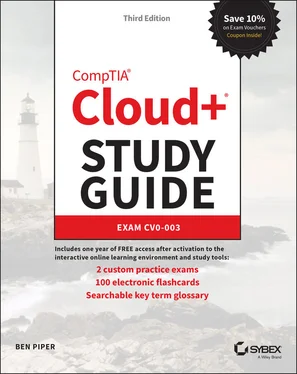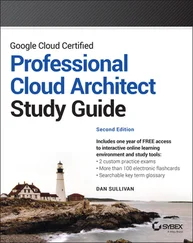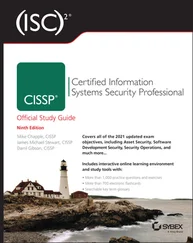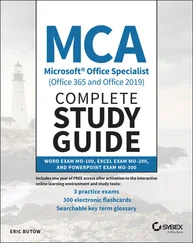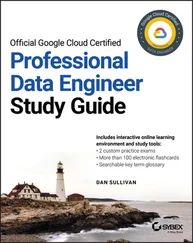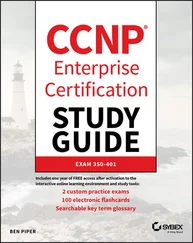99 C. A secure Internet-based connection would be a VPN.
100 A. Logging into systems is referred to as authentication. Also, the question references multifactor authentication (MFA) as part of the system.
Chapter 1 Introducing Cloud Computing Configurations and Deployments
THE FOLLOWING COMPTIA CLOUD+ EXAM OBJECTIVES ARE COVERED IN THIS CHAPTER:
1.1 Compare and contrast the different types of cloud models.Deployment modelsPublicPrivateHybridCommunityCloud within a cloudMulticloudMultitenancyService modelsInfrastructure as a service (IaaS)Platform as a service (PaaS)Software as a service (SaaS)Advanced cloud servicesInternet of Things (IoT)ServerlessMachine learning/Artificial intelligence (AI)Shared responsibility model
1.3 Explain the importance of high availability and scaling in cloud environments.HypervisorsAffinityAnti-affinityRegions and zonesHigh availability of network functionsSwitchesRoutersLoad balancersFirewallsScalabilityAuto-scaling
1.4 Given a scenario, analyze the solution design in support of the business requirements.EnvironmentsDevelopmentQuality assurance (QA)StagingProductionTesting techniquesVulnerability testingPenetration testingPerformance testingRegression testingFunctional testingUsability testing
3.1 Given a scenario, integrate components into a cloud solution.ApplicationServerless
4.1 Given a scenario, configure logging, monitoring, and alerting to maintain operational status.MonitoringBaselinesThresholds
4.3 Given a scenario, optimize cloud environments.PlacementGeographicalCluster placementRedundancyColocation
4.4 Given a scenario, apply proper automation and orchestration techniques.Automation activitiesRoutine operationsUpdatesScaling
Introducing Cloud Computing
You'll begin your CompTIA Cloud+ (CV0-003) certification exam journey with a general overview of cloud computing. With a strong understanding of cloud terminology and architectures, you'll better understand the details of the cloud, which in turn means that you'll be better prepared for the Cloud+ exam and be effective when planning, deploying, and supporting cloud environments.
Let's start by briefly looking at where cloud sits in the broader scope of the IT world. Before cloud computing, organizations had to acquire the IT infrastructure needed to run their applications. Such infrastructure included servers, storage arrays, and networking equipment like routers and firewalls.
Options for where to locate this infrastructure were limited. An organization with an ample budget might build an expensive data center consisting of the following:
Racks to hold servers and networking equipment
Redundant power sources and backup batteries or generators
Massive cooling and ventilation systems to keep the equipment from overheating
Network connectivity within the data center and to outside networks such as the Internet
Organizations that are less fiscally blessed might rent physical space from a colocation (colo) facility, which is just a data center that leases rack space to the general public. Because colo customers lease only as much space as they need—be it a few rack units, an entire rack, or even multiple racks—this option is much cheaper than building and maintaining a data center from scratch. Customer organizations just have to deal with their own IT equipment and software. To put it in marketing terms, think of a colocation facility as “data center as a service.”
Cloud computing takes the concept of a colocation facility and abstracts it even further. Instead of acquiring your own IT equipment and leasing space for it from a colo, an organization can simply use a cloud service provider . In addition to providing and managing the data center infrastructure, a cloud service provider (or just provider for short) also handles the IT hardware infrastructure—namely servers, storage, and networking. The consumer of the cloud services pays fees to use the provider's equipment, and such fees are typically based on usage and billed monthly. In this chapter, we'll dive further into the details of how cloud computing works and how an organization might use the cloud instead of—or in addition to—a traditional data center or colo model.
Related to the data center versus cloud distinction, there are two terms that you need to know. On-premises (on-prem) hosting refers to an organization hosting its own hardware, be it in a data center or a colo. In contrast, cloud computing is an example of off-premises (off-prem) hosting, as the hardware resources are not controlled by the organization that uses them. To make this distinction easy to remember, just equate on-prem with data center and off-prem with cloud.
This book will reference the National Institute of Standards (NIST) SP 800-145 publication ( https://doi.org/10.6028/NIST.SP.800-145) as the main source of cloud computing definitions. NIST defines cloud computing as follows:
… a model for enabling convenient, on-demand network access to a shared pool of configurable computing resources (e.g., networks, servers, storage, applications, and services) that can be rapidly provisioned and released with minimal management effort or service provider interaction.
Pay close attention to that last sentence. The reference to “minimal management effort or service provider interaction” is code for automation. Unlike a traditional data center or colocation facility, using the cloud doesn't require someone to physically go to a facility to install servers or plug in cables. There's no need for “remote hands” because cloud providers offer self-service management consoles that do the provisioning for you. When you think about it, cloud providers are really just providing automation-powered managed services for nearly every conceivable IT need.
In this study guide, you'll take a close look at all aspects of cloud computing as you progress on your journey to obtaining the Cloud+ certification. As an analogy to cloud computing, think of the services you get in your home through utilities, such as electricity and water services. You are probably not involved in the details of how these services are created and delivered; you turn the water faucet on and off, and pay only for what you use. Cloud computing follows the same principle, albeit applied to a variety of IT services.
Traditionally, computing did not follow this model. Instead, an organization would purchase all the hardware and software necessary to meet their needs. Adding to the cost, they needed to maintain a staff of specialized engineers to operate and maintain the systems. And they'd have to purchase more equipment than they needed to leave room for growth. This meant high capital outlays without a corresponding immediate payoff. As I mentioned earlier, organizations had to build and secure data centers to host, power, and cool the equipment.
Like utilities, cloud computing follows a pay-as-you-go model, where a provider sells computing resources that you consume as needed. This allows organizations to pay only for what they use, and it has many additional advantages that you'll explore throughout this book.
The market and adoption of the cloud computing business has exploded worldwide. In just the past decade, cloud computing has gone from a novelty for early adopters to a dominant position in the marketplace today. Although there are many statistics and measurements of the size, it is generally agreed that the market has been growing at least 15 percent annually worldwide. Current forecasts estimate the total cloud market worldwide will be more than $800 billion by the year 2025. What is clear is that the economics and business advantages of cloud computing are compelling companies to move more and more applications to the cloud, fueling additional growth well into the future.
Читать дальше
